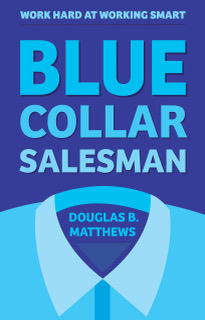Basketball Defenses
Basketball Defenses: An In-Depth Look at Strategies, Tactics, and Innovations

In the sport of basketball, defenses play a crucial role in determining the outcome of a game. Teams invest significant time and energy into perfecting their defensive strategies to stop opponents from scoring. When discussing Basketball Defenses, the two primary categories are zone defense and man-to-man defense. These defensive systems can be applied in various ways, depending on the team’s strategy, talent, and game situation. Coaches and players must master these defenses to remain competitive. In this post, we’ll explore the different types of Basketball Defenses, the strengths and weaknesses of each, and how analytics and innovation are shaping the future of basketball defense.
Difference Between Zone Defense and Man-to-Man Defense
The two primary defensive strategies in basketball are zone defense and man-to-man defense. Understanding the differences between these strategies is fundamental to understanding how teams strategize on defense.
Zone Defense
In a zone defense, players are assigned specific areas or zones on the court to defend rather than guarding a particular player. Each defender is responsible for covering anyone who enters their assigned zone. Zone defenses are designed to clog passing lanes, force low-percentage shots, and neutralize quick, athletic offensive players by packing defenders in key areas.
For instance, in a 2-3 zone defense, two players guard the perimeter, and three players protect the interior. The purpose is to force the opposing team to shoot from long range rather than driving into the paint, which can be a higher percentage scoring area.
Man-to-Man Defense
Conversely, in a man-to-man defense, each defender is tasked with guarding a specific opposing player. The goal is to neutralize the individual offensive skills of opponents by applying constant pressure. Man-to-man defense emphasizes one-on-one matchups, forcing defenders to stay with their assignments and challenging players to win their individual battles.
A successful man-to-man defense requires quick footwork, communication, and an ability to read offensive plays. Defenders must follow their assigned player through screens, cuts, and offensive sets, preventing them from getting open for shots or driving to the basket.
Types of Zone Defenses in Basketball
Zone defenses come in various formations, and each has its unique tactical advantages. Coaches select zone defenses based on their team’s strengths and the opposition’s weaknesses.
2-3 Zone Defense
The 2-3 zone is one of the most common zone defenses used in basketball. In this defense, two players (usually guards) patrol the perimeter, while three players (usually forwards and a center) cover the inside. This defense focuses on protecting the paint and forcing opponents to take outside shots. The 2-3 zone is highly effective against teams with strong interior offenses but weak perimeter shooting.
Pros:
- Protects the paint and limits easy layups.
- Forces teams to rely on outside shooting.
- Easier to defend against teams with athletic slashers.
Cons:
- Vulnerable to good perimeter shooting teams.
- Difficult to guard against quick ball movement.
- Requires constant communication to cover gaps in the zone.
3-2 Zone Defense
In a 3-2 zone defense, three players defend the perimeter while two guard the interior. This defensive formation is particularly effective against teams with strong perimeter shooters, as it allows defenders to contest shots quickly. The 3-2 zone can also be modified to shift into a 1-2-2 alignment, which puts even more pressure on outside shooters.
Pros:
- Effective against teams with good three-point shooters.
- Covers the perimeter well and reduces open outside shots.
- Provides solid defense against fast-paced offenses.
Cons:
- Leaves the paint vulnerable to interior attacks.
- Rebounding can be challenging if defenders are not in good position.
- Requires strong communication to avoid leaving open gaps.
1-3-1 Zone Defense
The 1-3-1 zone defense places one defender at the top of the key, three defenders in the middle of the court, and one defender under the basket. This zone is more aggressive in pressuring ball handlers at the top of the key and forces the offense into making quick decisions. The 1-3-1 is especially effective for trapping ball handlers and creating turnovers.
Pros:
- Creates opportunities for steals and turnovers.
- Forces offenses to rush and make mistakes.
- Can disrupt offensive rhythm and ball movement.
Cons:
- Vulnerable to quick ball reversals and skip passes.
- Leaves baseline and corner shots more open.
- Requires quick rotations to avoid defensive breakdowns.
Types of Man-to-Man Defenses in Basketball
Man-to-man defenses are versatile and can be adjusted depending on the offensive strategies of the opposing team. Coaches can modify man-to-man defenses to create pressure, contain specific players, or help weaker defenders.
Standard Man-to-Man Defense
In a standard man-to-man defense, each defender is assigned to guard an opposing player. The primary goal is to stay between the offensive player and the basket, applying constant pressure to prevent easy shots. The defender must stay with their assigned player through screens, cuts, and drives to ensure they don’t get open looks.
Pros:
- Allows for constant pressure on ball handlers.
- Defenders can adjust to individual offensive players’ strengths and weaknesses.
- Encourages one-on-one defensive skill development.
Cons:
- Vulnerable to mismatches, especially when offensive players are bigger or quicker.
- Can be exhausting for players to stay with their assignments.
- Requires significant communication to defend against screens and cuts.
Switch Defense
In a switch defense, players switch defensive assignments when offensive players set screens or try to create mismatches. This allows teams to stay with the ball handler and prevent open shots or drives. Switch defense is especially useful against pick-and-roll heavy offenses.
Pros:
- Prevents offensive players from taking advantage of mismatches.
- Creates less confusion in defending pick-and-roll plays.
- Allows defenders to stay with the ball and maintain pressure.
Cons:
- Vulnerable if defenders are not versatile enough to guard different positions.
- Can lead to size mismatches, especially if smaller players switch onto bigger offensive players.
- Requires excellent communication and quick decision-making.
Full-Court Press Defense
A full-court press is a man-to-man defense extended to the entire length of the court. This aggressive defense is designed to pressure the ball handler from the moment the opposing team inbounds the ball. The goal is to force turnovers, bad passes, or rush offensive plays.
Pros:
- Forces the offense into rushed decisions and turnovers.
- Can disrupt offensive flow and rhythm.
- Provides opportunities for fast breaks off of steals.
Cons:
- Highly exhausting for players, requiring excellent conditioning.
- Vulnerable to fast breaks if beaten.
- Can lead to easy baskets if offensive players break the press.
Pros and Cons of Zone and Man-to-Man Defenses
Each defensive strategy has its own set of advantages and disadvantages. Understanding the pros and cons of both zone and man-to-man defenses allows teams to choose the best strategy for different situations.
Pros of Zone Defenses:
- Zone defenses pack the paint and limit easy inside scoring opportunities.
- They force opponents to rely on outside shooting.
- Zones allow teams to mask individual defensive weaknesses.
Cons of Zone Defenses:
- Zone defenses are vulnerable to good outside shooting.
- Teams with quick ball movement can exploit gaps in the zone.
- Rebounding is often more difficult in zone defenses.
Pros of Man-to-Man Defenses:
- Man-to-man defenses allow for constant pressure on the ball handler.
- They enable defenders to take away individual offensive threats.
- Mismatches can be exploited when the defense is flexible.
Cons of Man-to-Man Defenses:
- Man-to-man defenses are vulnerable to mismatches, particularly if defenders are slower or undersized.
- They require significant communication and stamina to be effective.
- Pick-and-roll plays can disrupt man-to-man defenses if not handled correctly.
Role of Analytics in Defensive Strategy
Analytics has become an essential part of basketball strategy, particularly in deciding which defensive schemes to implement. Advanced statistics can provide coaches with detailed information about their opponent’s tendencies, strengths, and weaknesses. For example, data about an opponent’s shooting percentage from various areas of the court can help coaches decide whether to use a zone defense or man-to-man defense.
Teams can also track the success rate of their own Basketball Defenses and make adjustments in real time. Analytics allows coaches to see which players perform best in certain defensive schemes and whether adjustments are needed based on the flow of the game.
Future Innovations in Basketball Defenses
The future of Basketball Defenses may see even more advanced, hybrid defenses that blend zone and man-to-man elements. As the game evolves, teams may experiment with more flexible defensive schemes that rely on switching, rotating, and trapping in different areas of the court. Defensive schemes might also incorporate more positionless basketball concepts, where players are required to guard multiple positions effectively.
Additionally, with the rise of real-time data tracking, defenses could become more adaptive, changing on the fly based on in-game analytics. We might even see AI-assisted defensive strategies that provide instant feedback to coaches during games.
Conclusion
In conclusion, Basketball Defenses are a critical component of the game. Both zone and man-to-man defenses have their strengths and weaknesses, and the choice of defense often depends on the opponent and the game situation. Analytics has become a valuable tool for refining defensive strategies, and future innovations promise to bring even more sophistication to the game. With the ongoing evolution of basketball, defenses will continue to adapt and shape the future of the sport.






